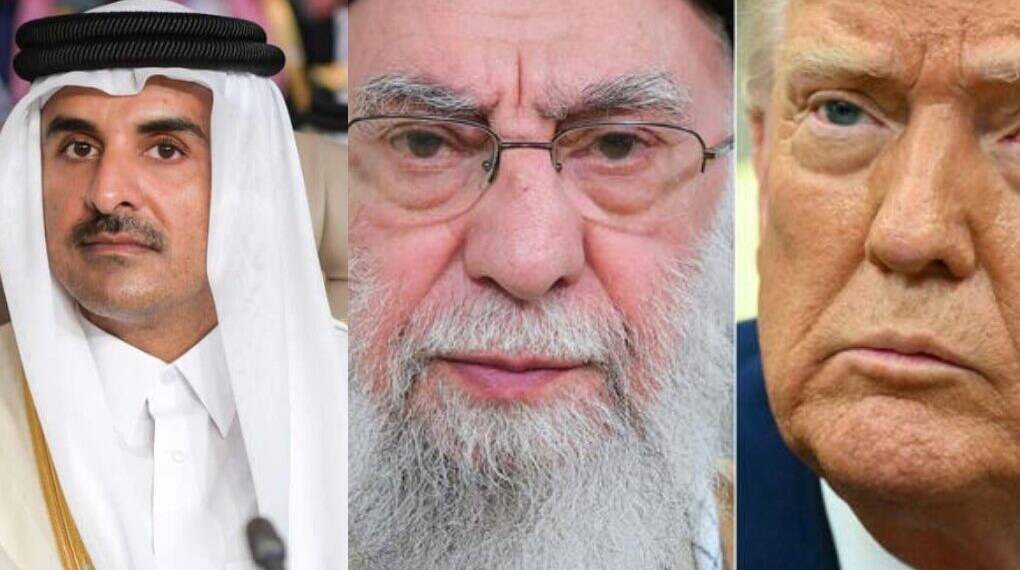In a geopolitical chess move echoing past conflicts, Iran’s recent missile attack on the American-operated Al Udeid Air Base in Qatar appears to have been as much a symbolic act of defiance as a calibrated attempt to avoid broader escalation. The strike, which followed U.S. airstrikes on three key Iranian nuclear sites, has drawn attention for its apparent forewarning and minimal damage — a stark contrast to the destruction its context might suggest.
According to reporting by The New York Times journalist Farnaz Fassihi, Iran coordinated the attack with Qatari officials, giving advanced notice to minimize casualties. Three Iranian officials cited by Fassihi described the strike as necessary to “symbolically” respond to the U.S. without provoking a full-scale conflict.
The strategy mirrored a 2020 episode when Iran gave Iraq prior warning before launching ballistic missiles at American bases in retaliation for the assassination of General Qassem Soleimani.
President Donald Trump responded on Truth Social by calling the Iranian attack “a very weak response.” Trump claimed that of the 14 missiles launched, 13 were intercepted and one allowed through intentionally due to its non-threatening trajectory. “I am pleased to report that NO Americans were harmed,” he wrote, praising Iran for the advance warning and even expressing hope for regional peace — an unusually conciliatory note for the former president.
Yet this seemingly coordinated de-escalation narrative was complicated by Qatar’s response. A spokesperson from Qatar’s Foreign Ministry described Iran’s action as “surprising,” suggesting that Doha was not given advance notice. This contradictory statement raises questions about the depth and authenticity of any behind-the-scenes coordination and whether Iran’s outreach, if any, was limited or misinterpreted.
Strategic Messaging and Regional Stakes
The entire episode reflects a strategic pattern increasingly employed by Iran: using missile strikes not to destroy, but to signal. By minimizing harm while still projecting strength, Iran maintains its domestic credibility and international posture without crossing red lines that could trigger a full-blown war with the United States.
This balancing act also places regional players like Qatar in a diplomatic vise. As host to the U.S.’s largest Middle Eastern military base, Qatar is a critical American ally — but also maintains pragmatic relations with Iran. The confusion over advance warning suggests either a miscommunication or a deliberate attempt to keep Qatar officially “out of the loop,” preserving plausible deniability.
Trump’s Role and the Politics of Peace
Trump’s reaction is notable not just for its content but for its tone. While he emphasized U.S. defensive strength, his message also included praise for Iran’s restraint and appreciation for the Emir of Qatar’s efforts at regional peace. Whether this signals a shift in his political rhetoric or a tactical move to appear statesmanlike remains to be seen.
Trump’s public encouragement for both Iran and Israel to “proceed to Peace and Harmony in the Region” stands in sharp contrast to the combative posture he typically maintained during his presidency. It may reflect a broader recognition that perpetual escalation benefits neither side — especially amid increasingly multipolar global dynamics involving China and Russia.
Also read: “Ceasefire Now in Effect. Please Don’t Violate It” Trump: Role of United States and Qatar in mediation
The missile strike on Al Udeid is less a flashpoint than a carefully choreographed maneuver — one that allowed Iran to save face, gave the U.S. a reason to downplay the incident, and left Qatar caught in a gray zone of diplomacy. But the contradictory accounts and muted damage do not erase the fact that hostilities remain just beneath the surface.
This incident, like others before it, is a reminder that in the Middle East, warfare is often as much about narrative control as it is about military action.








